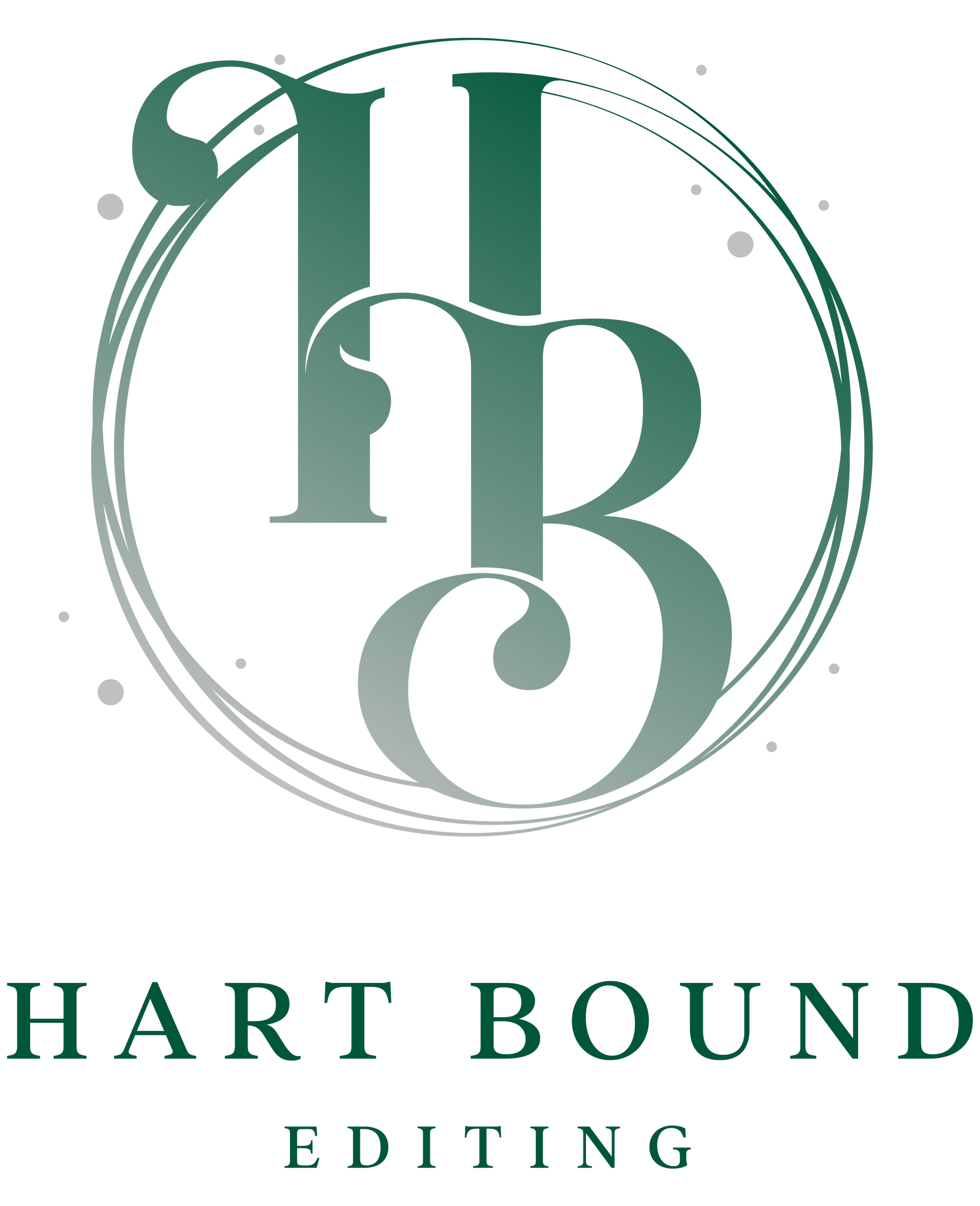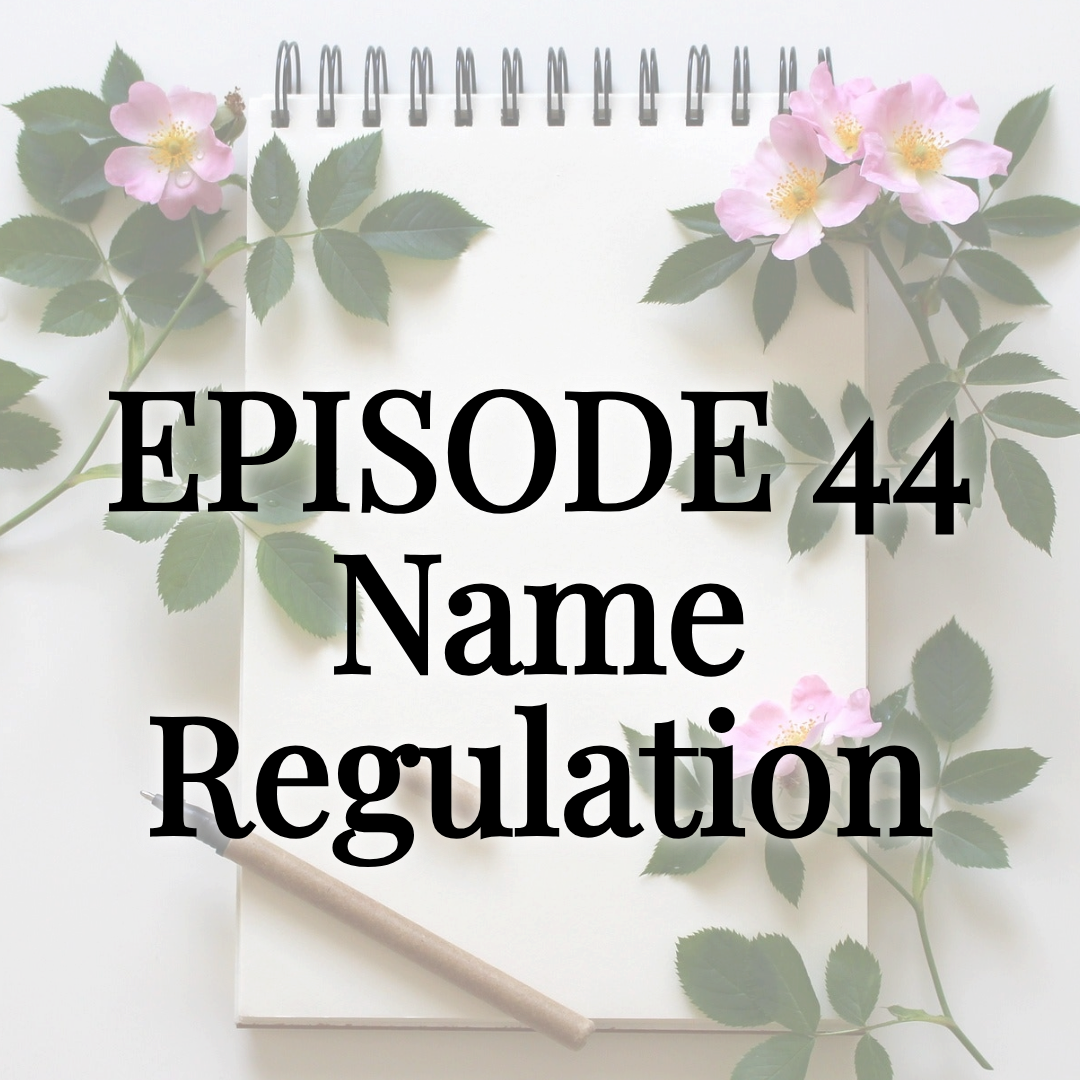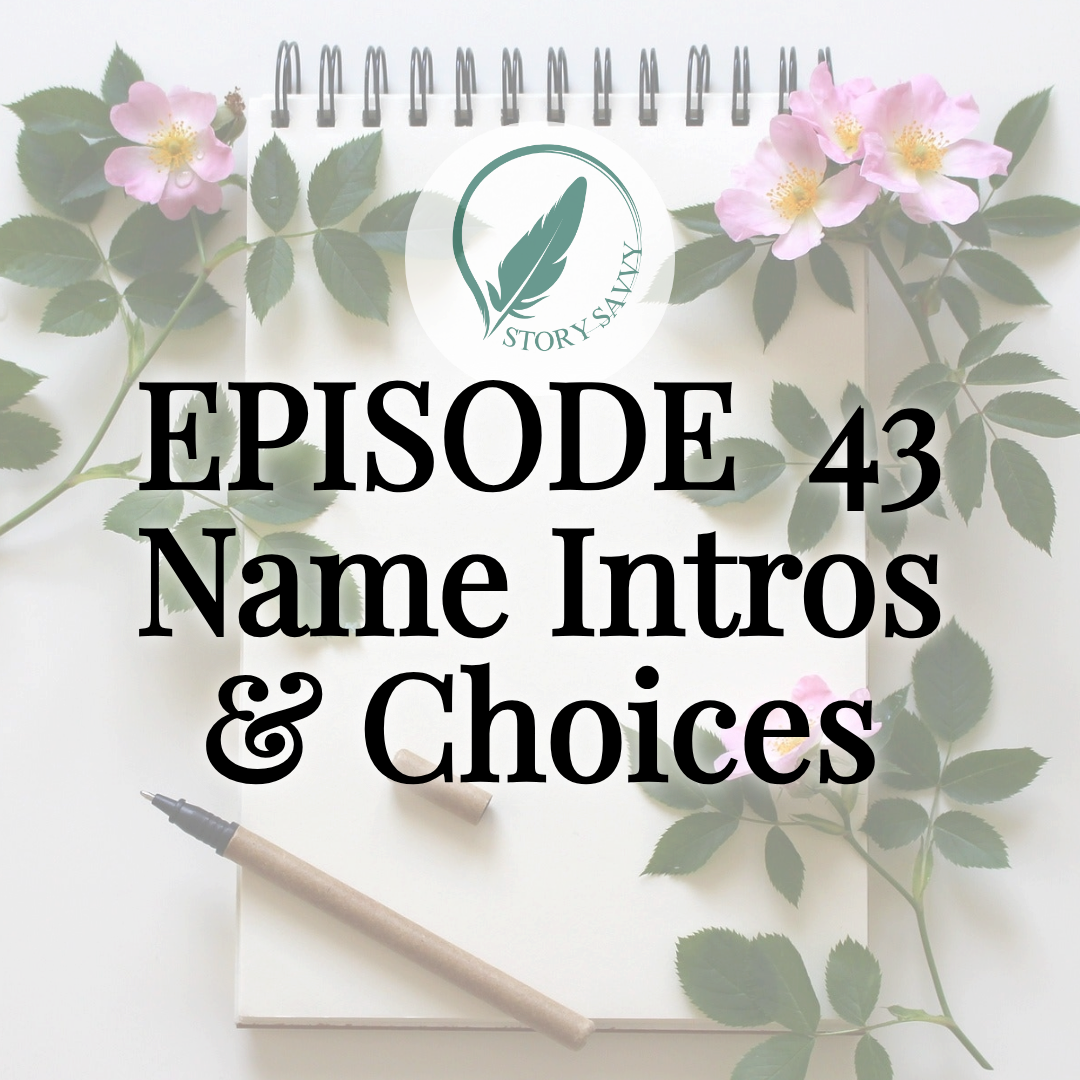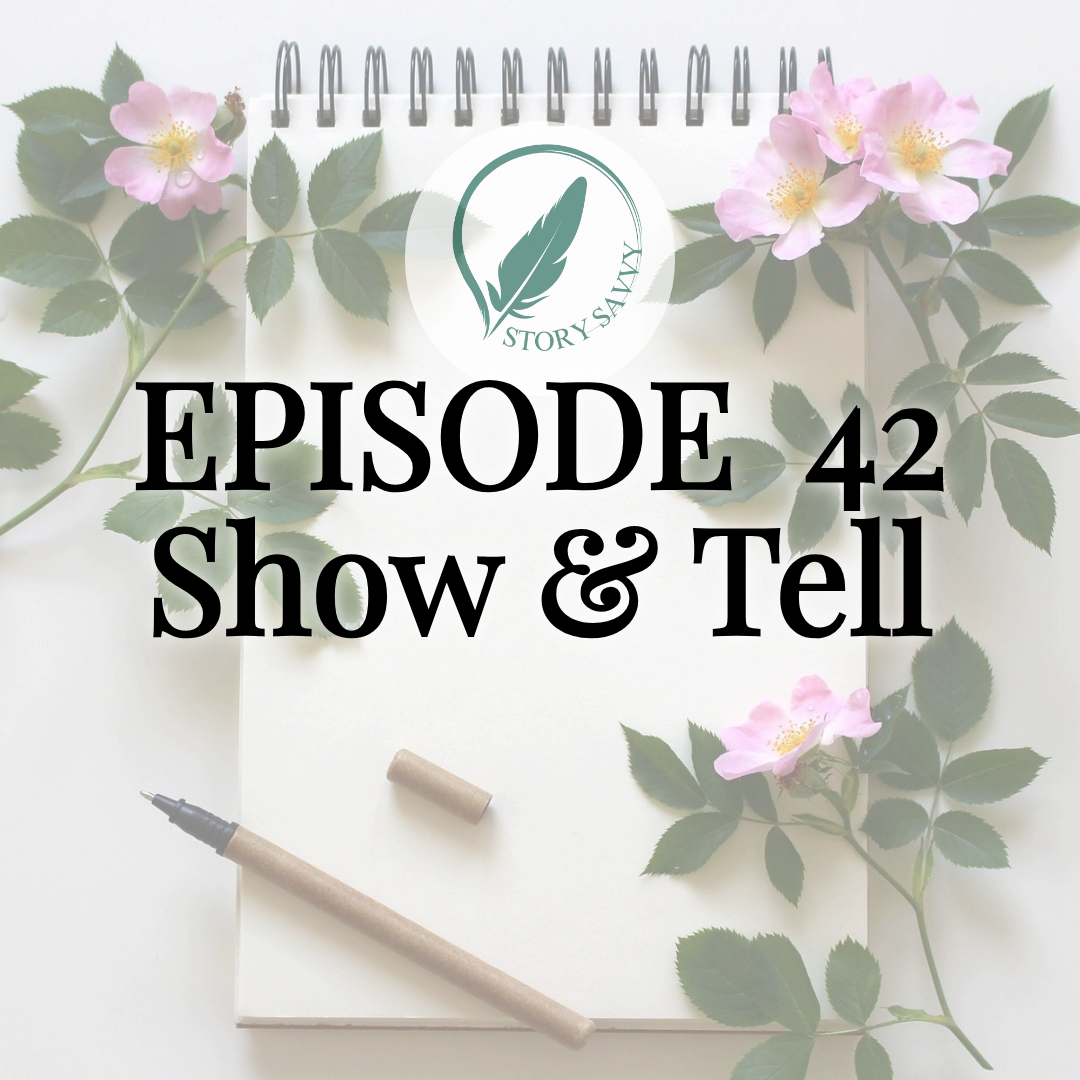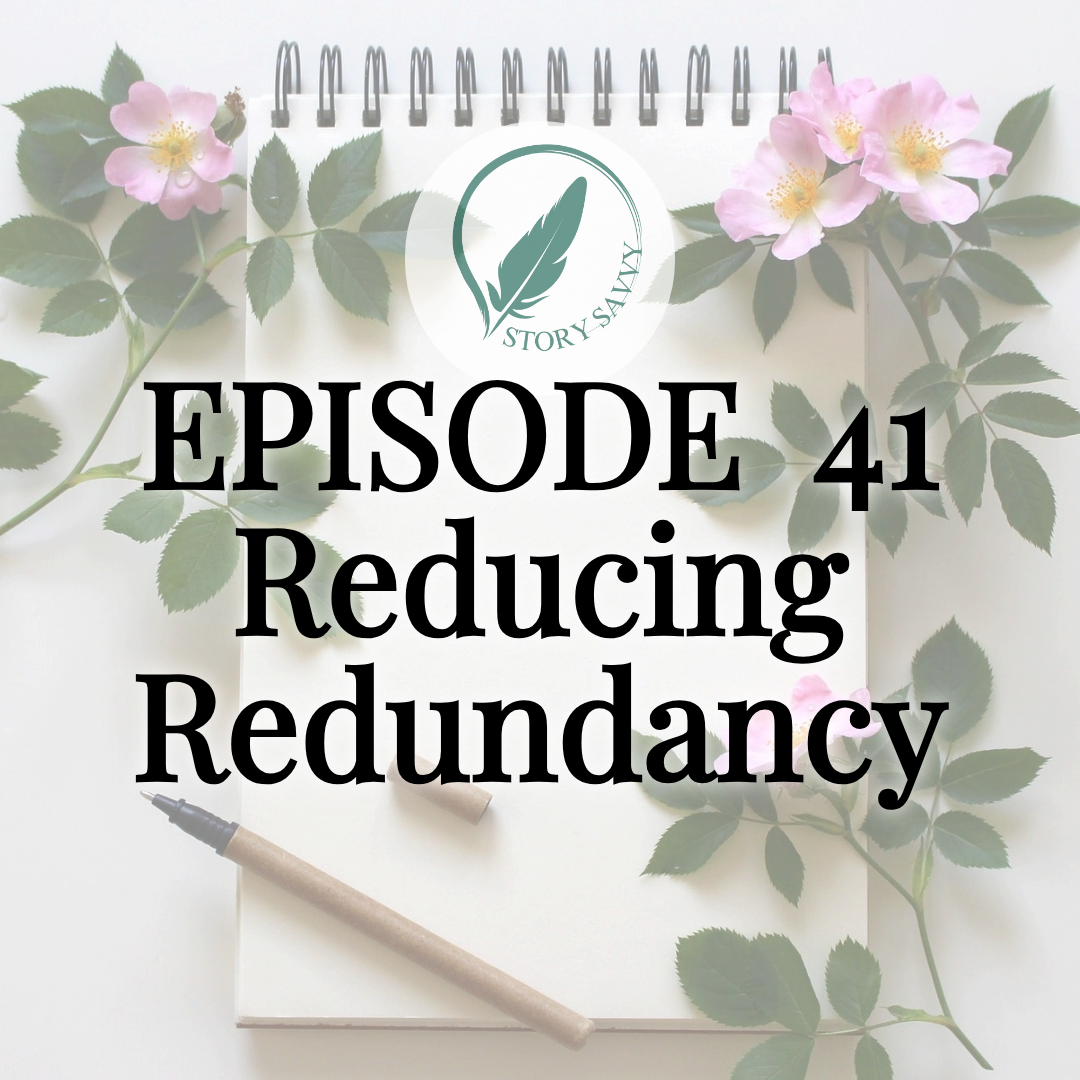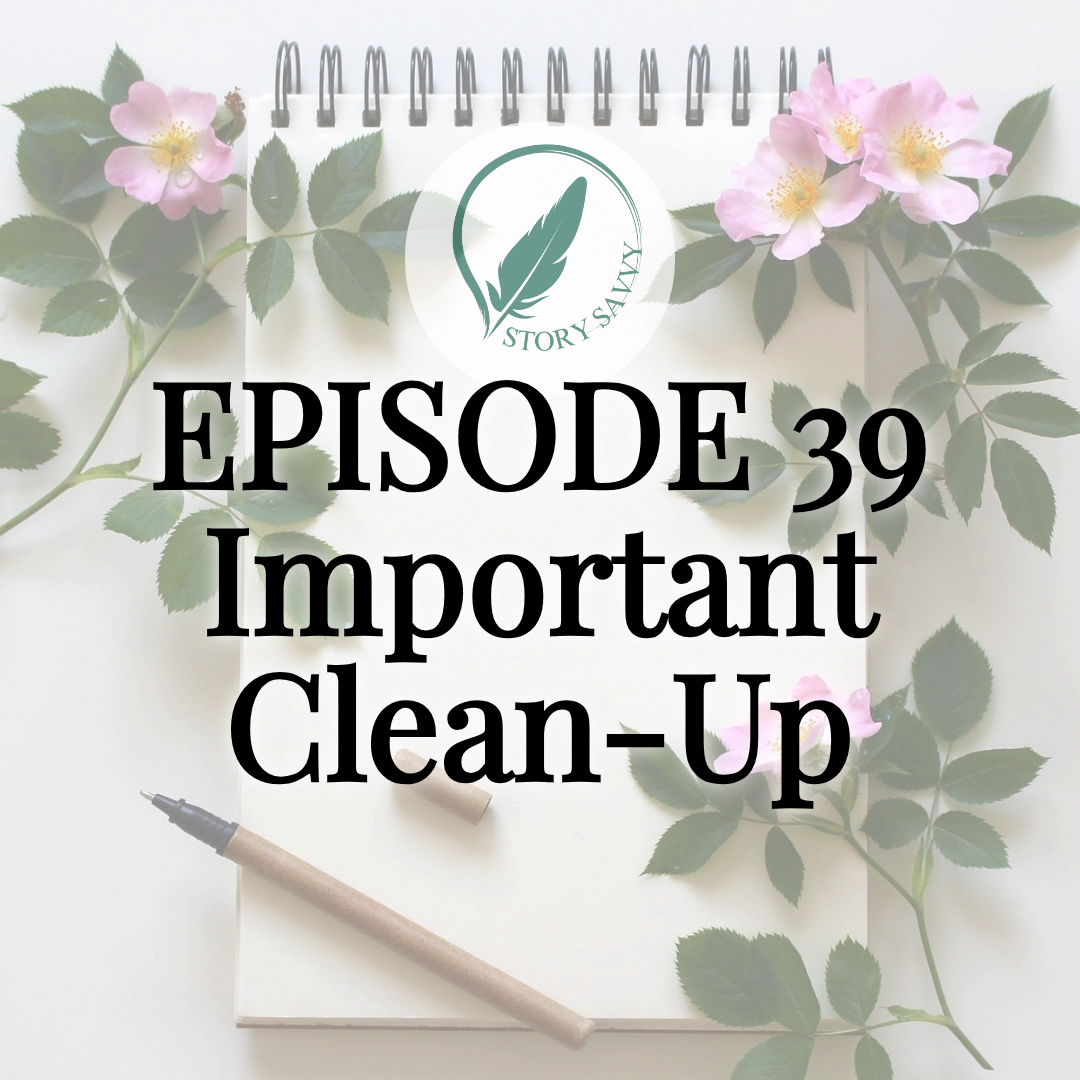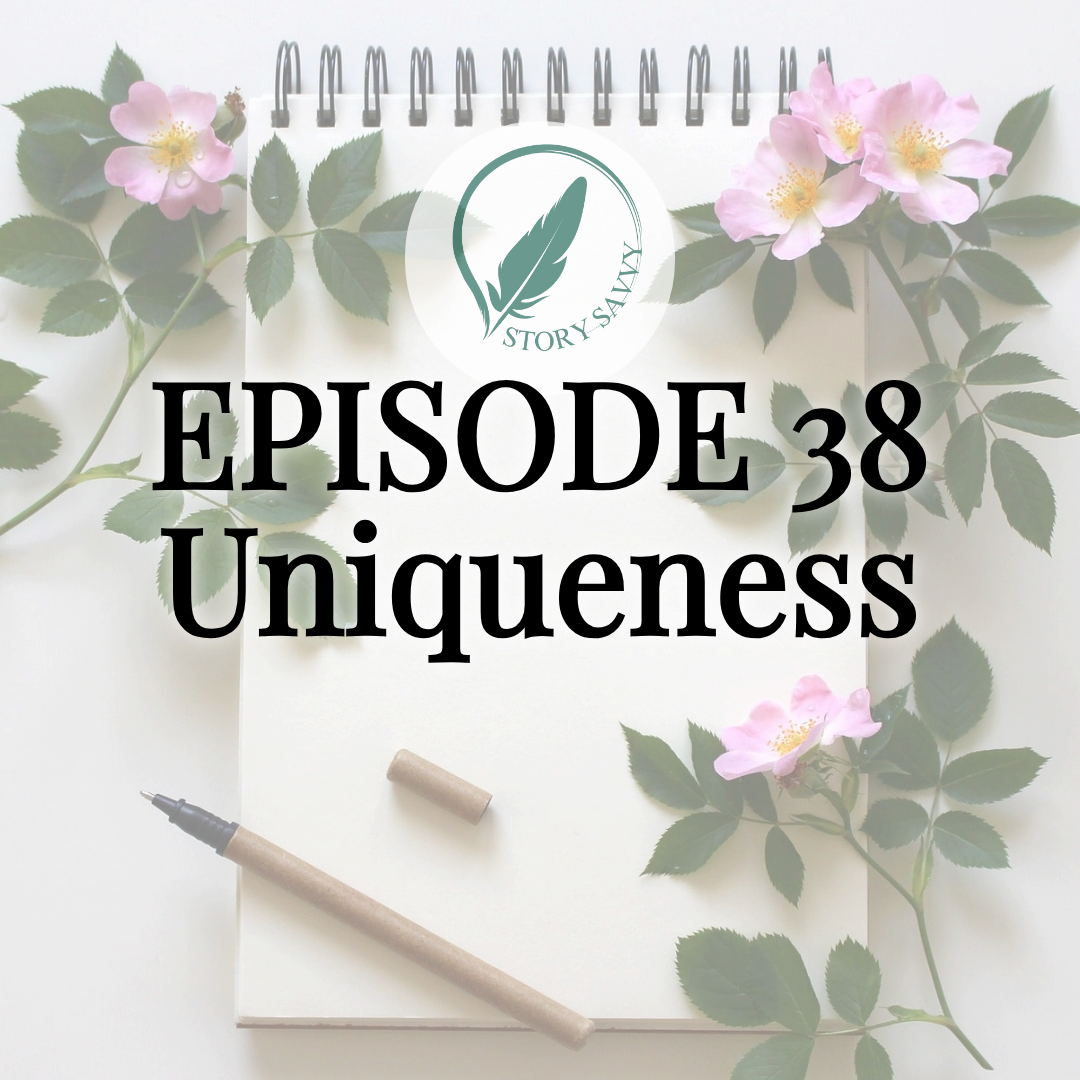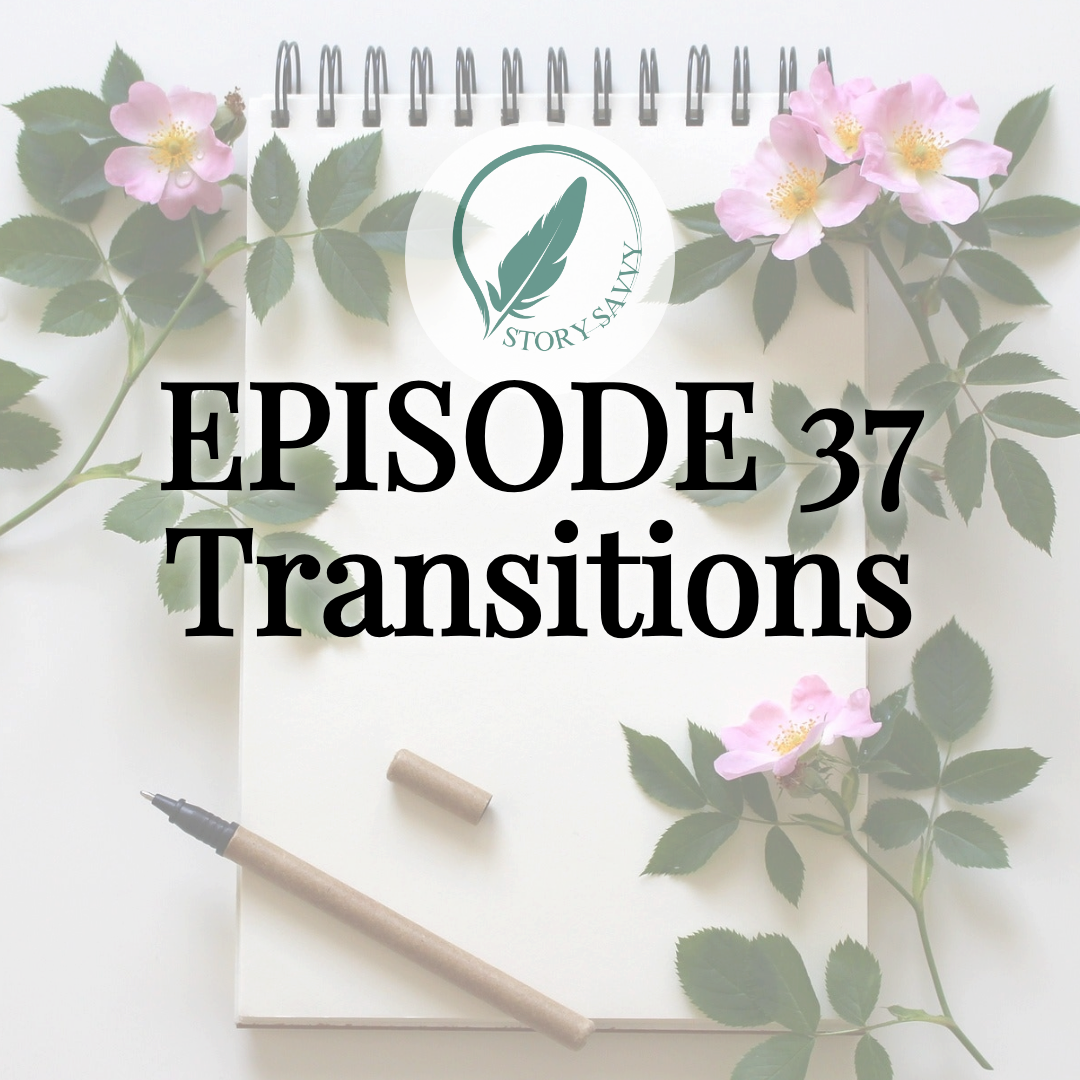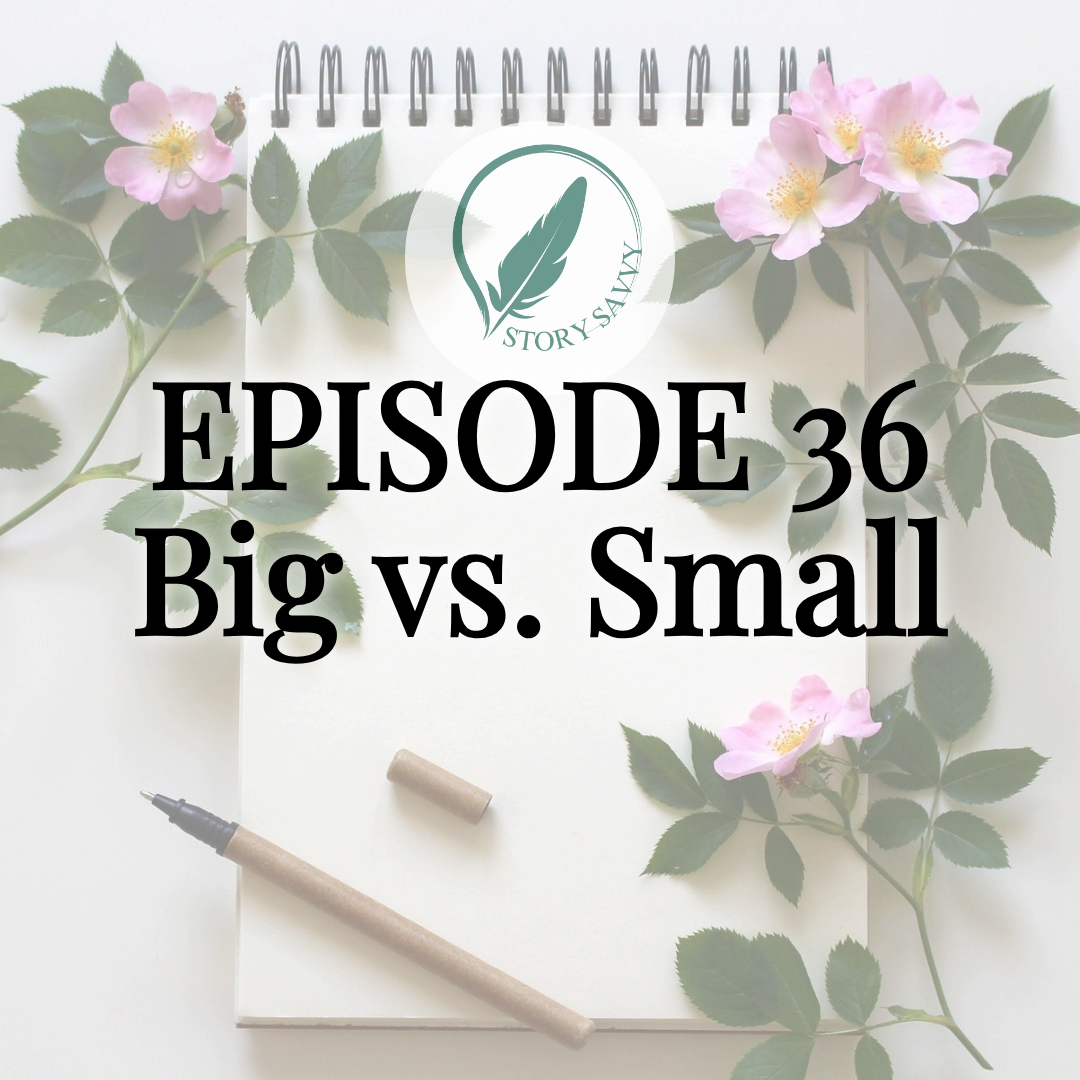Nonverbal Communication: Story Savvy Self-Editing Episode 45
Nonverbal Communication: After-episode thoughts, overview, and transcript…

Opposite the point I make in the episode that you need to avoid describing experiential NVC for non-POV characters, you
also want to avoid using observable-only NVC for POV characters. For example, if you are in Jane’s POV, it wouldn’t make sense to say “her expression darkened and she seemed upset” in narration, since that is an observation from outside her experience or POV. Hope that's helpful to point out!
Lastly, the other episodes I reference in the transcript below can be found here:
Episode 13: Pacing—Rises and Falls
Episode 18: Appropriate Intensity
Episode 42: Exposition & Info-Dump: Show vs Tell
Happy editing!
Episode 45 Overview:
Nonverbal Communication
“Do I use too little, or too much nonverbal communication, such as how emotions feel physically, body language, gestures, posture, expressions, and the like? Do I have enough variety with them without breaking my authentic voice? And do I use them purposefully to add immersion or meaning?”
In this episode of the Story Savvy Series, we unpack how to polish your manuscript by editing nonverbal communication for clarity and impact. Learn how to avoid repetitive gestures, use body language to deepen character POV, and maintain descriptive variety without losing your voice. We also cover how to avoid head-hopping, enhance emotional beats, and balance showing vs. telling when writing genre fiction description. Rebecca gives many great self editing tips for writers.
Join developmental editor Rebecca Hartwell and aspiring middle grade fantasy author Agnes Wolfe as they break down this week's self-editing topic of nonverbal communication (NVC) and polishing your manuscript. Together, they explore practical craft strategies for authors looking to improve their writing and revision skills while discussing such topics as trimming NVC for pacing and clarity as well as using NVC appropriately.
In This Episode:
- Why nonverbal communication matters and how it deepens POV
- Practical ways to replace adverbs and telling with body language
- Building variety: avoiding overused gestures and thesaurus traps
- Assigning distinct nonverbals to characters for stronger characterization
- When to add vs. trimming nonverbal communication
- Using nonverbals for foreshadowing and emotional intensity
Resources:
- High-Quality Developmental Editing
- Agnes Wolfe - agneswolfeauthor.com
- Dragonheart Academy - Dragonheartacademy.com
See you next week for episode 46: Revisiting Gaps & Sticking Points
Episode 45 Transcript:
Nonverbal Communication
Rebecca Hartwell: Hello and welcome to the Hart Bound Editing Podcast. This is episode 45 of the weekly Story Savvy series, where we tackle the 52 biggest self-editing topics and tips to help you make your good story great. As an aspiring author asks me, a developmental editor, all of the questions that you have wanted to. We have covered a bunch in this series so far, including last week's episode on name consistency and regulation, which was the second of a two-part series on names. Today, we are going to talk about nonverbal communication in written fiction. By the end of this episode, you'll hopefully feel confident using what you learn to improve reader immersion, descriptive variety, and POV depth. Joining me to ask all of the questions is my friend and co-host, Agnes Wolf. Welcome.
Agnes Wolfe: Welcome! I'm an aspiring fantasy author who hopes to release her first middle grade fantasy later next year, and also the host and founder of Authors Alcove. I'm here today to tackle how to check and improve descriptions of things like gestures, posture, expressions, and more as writers. So, I think this is such a huge topic, and I'm so glad that we are covering this. Before I get to that particular question, I think it's important just to talk about why it's important, and what's the goal we should have around this topic in our self-editing, specifically.
Rebecca: Nonverbal communication descriptions is a niche subset of showing over telling, which I think is the most often neglected. In particular, and adding to that answer, using adverbs or stating emotions or tone can easily and quickly start feeling overused, or like it's falling into too much telling. So, switching things over to more nonverbal communication, like how emotions feel in the POV character's body, or what expressions, posture, and the like they are observing in others. The goals with self-editing around this topic have a few different layers. First, you want to try to avoid adverbs, odd or unusual dialogue tags, or too much telling around emotions. And you can do this by switching over to more nonverbal communication descriptions, like I just mentioned. Second, you want to make sure that outside of omniscient POV, which is an exception, you always have a very clear line between experienced or experiential nonverbal cues coming from only the POV character for a given scene, and observed or observable NVC—so, nonverbal communication, coming from only the non-POV characters. So, for example, let's say you want to convey annoyance. Within the person that is the POV character for that scene, it would make sense and be correct and appropriate to describe that annoyance as them balling their fists, or feeling a tightness in their chest, or them grinding their teeth, tapping their foot, however you want to describe that, but it has to be something that they experience and feel. But, if it's a secondary character, or just any character that isn't in the POV for that scene, you can't say that their chest feels tight, because that's head-hopping into their perspective. So, their nonverbal communication as a non-POV character has to be only things that the POV character can observe, such as the foot tapping, or the clenched fists, or their expression, things like that. Third, on the list of goals around nonverbal communication and self-editing is, you want to make sure that you are hitting the Goldilocks zone for variety within your NVC descriptions. On one side of that, you don't want to be too repetitive with your terms or phrases, and in particular, you don't want to overuse noticeably unique or just noticeable options. The best example that I can give about this is in the Court of Thorns and Roses series, the author uses the phrase “and it felt like her chest caved in.” And that phrase of chest caved in is unusual and unique, and I have seen so many different reader groups bring it up as just, “Why does she keep saying that?” But if it was a more common phrase, that wouldn't be an issue, so that's sort of this end of the spectrum that we're trying to avoid in our NVC descriptions. On the other end of that spectrum, you don't want to distract your readers by whipping out the thesaurus and stepping outside of the vocabulary conventions for your genre and audience by getting too varied, or too flowery and inventive with your descriptions. So, as you're editing for this topic, just bear that balance in mind as you go through, and aim for variety within your authentic author voice and style goals.
Agnes: So, I'm going to tell on myself right here, I know that I use smirked way more than necessary, and I'm sure that if I left it in every single time, it would be so distracting to a reader. In fact, I actually probably only use 5 nonverbals on a regular basis, forgetting that there's many more that you can use. So obviously a read-through and a simple find and replace in Word would be very helpful to identify this. But, if we do find that we do have a few that we reuse over and over, like I did, what are some things we should consider as we edit our manuscript, more than just the simple find and replace?
Rebecca: First and foremost, I suggest brainstorming your own list of all the nonverbal communication descriptions you, the individual, think would feel and sound natural to you and in your voice. That can really save you from just staring at all of these search results for a certain word and feeling stuck around what you could possibly replace some of them with.
And, again, I suggest dabbling in audio. Often, if you overuse a certain phrase, it's easier to catch or remember how often you are using it with your ears than it is with your eyes. You can also use that brainstormed list that you made to give yourself a list of the terms to search for in the first place to see how often you're using them. Try searching every NVC word or phrase you brainstormed and write down the number of uses next to each one. If those numbers seem balanced for however you want to define that, great! If not, that gives you a solid starting point for diving in with all of these edits.
Agnes: Okay, so again, I'm going to totally tell on myself, but, I literally went… as I was editing, I ended up finding that I would go from one overused nonverbal to another when I was trying to diversify my language, because apparently, I'm not very good at changing very much. So, what would be some ways to help broaden our non-vocabulary—or, excuse me, our nonverbal vocabulary—so we aren't going from too many, like, “she smirked,” to “she smiled,” or something like that.
Rebecca: Great question, and I've definitely been guilty of that myself. I think that this also goes back to that brainstormed list for your own personal NVC terms. Once you have made it, try using as many of those different terms as you can spread out across the book. So, if you overuse the word smirk, brainstorm more than just the word smiled as an alternative to it, and when you do your search for the overused word, try to reach for a variety of replacements rather than one go-to replacement. That is, essentially, the extent of that. But you can also try assigning each character their own distinct nonverbal cues. So, maybe one character, when they do this, you call it a smile. When this other character does it, you call it a smirk, and when that one does it, you call it a grin, that sort of thing. So that will have two benefits, essentially. It will save you from some of that repetition and always using the same term, but it can also help build up individuality for each of those characters.
Agnes: So, I know that we all have our own that we tend to lean to, but are there some that over the broad spectrum of authors that we tend to have? I guess a list of most common overused nonverbals that people tend to use.
Rebecca: Yeah, I pulled up my own list that I check my books past, and the ones that I think I see the most from everything that I read and edit are: frowning, smiling, glancing and gazing, I guess I'll count those as two. A lot of it just tends to be naming specific body parts, so eyes—which I've mentioned in the past, I am very much guilty of, that's my worst one, I'm constantly talking about where people are looking and “their eyes raked down his body,” whatever. Heads, shoulders, stomach, and then some really common gestural nonverbal communications, like nodding and shaking their head, or things like that.
Agnes: Well, I'm glad to know that I'm in good company, because I think I use all of those too much. So, when communicating nonverbals, what are some things we should consider to make sure that the descriptions we are using feel organic to the individual character?
Rebecca: Yeah. Like I mentioned earlier, compartmentalizing those descriptions can be really helpful. So, if you want to have a character who, let's say, has a nervous tick of always chewing their fingernails, that's great, but have it only be that one character. I've edited a book where all of the characters have the same nervous tick of tugging their shirt down, and it was something that I had to point out to the author, because at that point, it becomes more about the author than it does about giving the character itself depth, so try compartmentalizing, and if one character has a very strong association with a particular expression, or emotional feeling in their own body when they're the POV character, try to keep that pretty much limited to them, and then give the other characters their own different sets of their go-to descriptions or experiences. And point 2, I guess: again, don't reach for exotic options too much in genre fiction. If you're writing literary, if you have masterworks that you consider your book in the same genre of that really use extremely flowery, inventive, interesting descriptions, that's fine, but for this series, we're mostly talking about genre fiction, particularly romance and fantasy, and in these, don't go overboard. Stick to familiar terms, because the point of these genres are more heavily on the side of delivering the story than they are about beautiful word use. So, think about that, and especially with your characters, where this applies to that is, if you have a very basic, level-headed, down-to-earth, let's say blacksmith character. He, in his own experience, POV, whatever, is probably going to use very simple language. But if you have, let's say, a 4,000-year-old elven king, yeah, your vocabulary options for describing his NVC either that he's observing in others or feeling in himself might be 3 times as large. Bear that in mind when you're looking at using NVC to add to specific characterization. You can also try just closing your eyes and really trying to put yourself in the experience of that moment to come up with the correct NVC for that moment. When this character, as you want them to be, experiences anger, how does that feel in their body? Or when you're in this POV character's head, what sort of cues would they be most likely to pick up on and able to interpret correctly that somebody else is feeling agitated? Are they going to be looking at their eyes and seeing that this person's eyes are darting everywhere? Which is my default. Or are they more likely to notice that this person is standing off to the side from the crowd, or that their fingers are tapping, something like that? What is that character going to notice? And if you close your eyes and try to put yourself in their shoes, that can really help with grounding that NVC experience like you'd mentioned in your question. And then, lastly on this topic right here, what dialogue actions that the protagonist takes—so just choices that they make and then enact—and context for a scene take on some of this weight of showing emotion or thought, things like that, so that you aren't overusing NVC in general? Instead of trying to describe an NVC that someone is feeling like their PTSD is triggered, you can try having them say that out loud. Or you can simply show that the context, something happened, maybe a firework went off, and now, they take the action of turning on their heel and promptly walking away. You don't have to use NVC to describe emotion, is what I'm saying, so when you feel like you're overusing it, try looking at dialogue, actions that they take in context to do that instead.
Agnes: I feel like nonverbal communication can do a lot as far as character building, so I feel like going along accents or a common phrase a character might use, that you could really build a character through maybe purposefully overusing a type of nonverbal. Are there rules we should keep in mind if we do want to a character who has a repetitive nonverbal without overusing it?
Rebecca: Yeah… I'm not sure where the line there would be with overusing if it's that specific scenario of, hey, I am making this character unique by, again, let's say, biting their fingernails as a nervous habit. One piece of advice that I can think of here is make sure that there is still variety within what they feel. So, you aren't always describing them as nervous and biting their fingernails. There are also moments when they are happy, or sad, or just really working on something hard. So, yes, you can still have nervous biting affair nails be a standard, go-to, unique trait for them, but make sure that they aren't always nervous, if that makes sense. And then within that, again, write out maybe 3 different ways. to describe that particular habit or idiosyncrasy, whatever the quirk is for that character, and try to cycle through them a little bit regularly. Make sure that you're not using the exact same wording, exact same phrase, over and over and over and over and over for a whole chapter or half of the book, or whatever like that.
Agnes: I also feel like nonverbals are really good at foreshadowing events. What are some ways that we can use those to really enhance our storytelling in that respect?
Rebecca: Lots of different ways. First, it adds a lot of depth to your POV. When I wrote my first book and was having a beta reader look at it for the first time, one of their major pieces of feedback for me was that my POV felt distant. And I had never heard of deep POV at that point, so I had to do a lot of research, and doing more to describe how the POV character felt with their emotions, rather than expressed them was a huge turning point in getting that POV a lot deeper and more immersed. Speaking of which, immersion for your reader in the story is also a big part of this NVC. In our real lives, we don't have a narrator voice telling us, “Hey, that person over there is mad at you.” What we actually do is observe their facial expressions and their tone of voice and their posture and their body language and their gestures and come to that conclusion ourselves. So, the more you can let your POV characters do that, as the reader's experiencing the world through their point of view, the more immersive and realistic and sort of tuning out of the rest of the world that experience can be for the reader. It can also help a lot with emotional strength. Particularly, like we talked about in episode 13 on pacing at the macro level, and in episode 18 on intensity. When you have an intense moment, if you don't have any nonverbal communication either being experienced or observed, it can make that moment feel really flat. But likewise, if you have a small mundane moment, but your character is feeling really kind of intense NVC, or seeing that in somebody else, and then that never gets addressed properly, that can be emotionally confusing and lose readers' trust and things like that. So, the use or lack thereof of NVC can very much play into that intensity and pacing issue. It is also yet another layer on that showing, over-telling topic, like from episode 42. Stating, let's say, Bob—Bob is angry. That's telling. Writing out Bob frowned and clenched his fists is showing. So, using more NVC instead of statements can do a lot to shift more from telling into showing, which, again, is super common advice. And then, my last thought here is just that using more NVC and using it well can simply add a lot more nuance and art to a story. You could take the most boring, predictable, written-to-formula, let's say, lovers meet scene, that you've ever written in your entire life or read. And using NVC, you can add nuance to that and make it more complicated and interesting in so many ways that, point blank, you couldn't, or stating the emotions, you couldn't. So, use the NVC as sort of this top dusting of different flavors that you can play with.
Agnes: So, how can we know where we should add or remove nonverbal cues? Because I'm sure we can overuse them, especially in certain scenes.
Rebecca: Yeah, I would say try to make a call for yourself individually if you think you're generally overusing across the whole book or underusing. In my experience, most authors fall on one side or the other, so knowing your starting point is a very important part of this process. From there, let's say you recognize that you tend to overuse NVC. If that's the case, look for places—I would say primarily, where, again, you can hand that word space over to dialogue, actions taken, or context, or where the moment is small and it doesn't actually matter that much, so that succinctness and clarity of meaning of just telling, of just stating she felt this way, is more helpful. And I refer people back to episode 42 on Show Don't Tell, there is a time and a place for both. And if you're overusing NVC, you might actually need to shift a little bit more in the direction of telling to spare your reader purple prose, whatever you want to call that. If you fall on the too-little NVC side, which I do in all of my first drafts, all of my editing around NVC tends to be adding. If you're falling on that side, look specifically for the moments where the emotion has the most impact on what's happening. So, the fact that this person is nervous or angry or excited really drives the direction that they move in going forward, or where you just want the reader to have the most understanding of the emotion being felt. And this tends to be in the big moments, so the turning points, the crises, the climaxes, whatever that looks like. Yeah, so beyond that, just trust your gut and pay attention to it. When you're reading through, and we're coming up quickly on an episode that's specifically about doing your final read-through, just pay attention a little bit. Watch out for major nonverbal cue moments, or places where you really do a lot of stating about adverbs, dialogue tags, tone. And maybe you could swap in some NVC to add variety, or to reduce word count, to do more showing or telling. Things like that. I can't really tell you to “go search this term, and this is where you put NVC.” It's really down to you to kind of assess the situation in your own book and decide where you want to go from there.
Agnes: I feel like I am kind of restating questions you've already answered, but when we're referring to show and tell, when should we consider telling our audience through inner dialogue, as opposed to the showing nonverbals?
Rebecca: I think when you really need a balance between clarity and meaning and immersion is a great use for internal thoughts. Pure nonverbal communication in narration is purely showing. And that can occasionally lack clarity and meaning. But, stating it like saying she's angry, or in dialogue saying I'm angry is just telling without showing. Having the internal thoughts as an option can be very helpful in balancing the two. I will say that even then, you need to make sure that you're in a Goldilocks zone. You don't want to overuse internal thoughts. But you also don't want to avoid them so regularly that it's kind of jarring when one does come up. So that might be enough of a reason. If you're going through and you're like, “Okay, my protagonist has an internal italicized thought in Chapter 1, and then he doesn't have another italicized internal thought until the climax,” that's a great excuse to go through and every other chapter, every 3-4 chapters, whatever—pick a moment of either telling emotion or nonverbal showing an emotion, and turn it into an internal thought, just to maintain that stylistic pattern throughout.
Agnes: That makes a lot of sense, and I'm so glad I asked that, because you really made me think about, you know, I do have internal thoughts, but I don't think I have very many, and I wonder if it might be kind of jarring that all of a sudden, out of nowhere, they do have that internal thought, so I love that. Well, anyway, thank you so much for your insight. It has helped me a lot.
Rebecca: Absolutely. Next week, we are going to start our final checks and go over revisiting gaps and sticking points in our manuscripts. We really are nearing the end of this process, and speaking of that, I want to thank everyone who has followed along for this whole series. I am so grateful for everyone watching and listening. If you know anybody, any other authors, writers, creatives who are struggling with the self-revision process with their novels, please send them this podcast. We want to help them. And yeah, I'll see you guys next week, and thank you, Agnes, for joining me, as always.
Agnes: Thank you.
Rebecca: Thank you so much for listening to the Hart Bound Editing Podcast. I look forward to bringing you more content to help you make your good story great so it can change lives and change your world. Follow along to hear more or visit my website, linked in the description, to learn how I can help you and your story to flourish.
See you next time!
